POC has announced the Procen Air, a new aero road helmet heavily inspired by time trial helmets.
Developed over several years, and debuted at this year’s Tour Down Under, POC claims the Procen Air offers a significant performance advantage over its previous aero road helmet, the Ventral.
The Procen Air’s design shares many similarities with the brand's recently launched time trial helmet, the Procen TT.
As with that helmet, POC claims the Procen Air harnesses the Venturi effect to improve both ventilation and aerodynamic efficiency.
Notably, the Procen Air also partially covers your ears, though POC says it has gone to great lengths to ensure hearing and peripheral vision are not affected.
Available now, the POC Procen Air costs £360 / $400 / €400.
Time-trial inspired
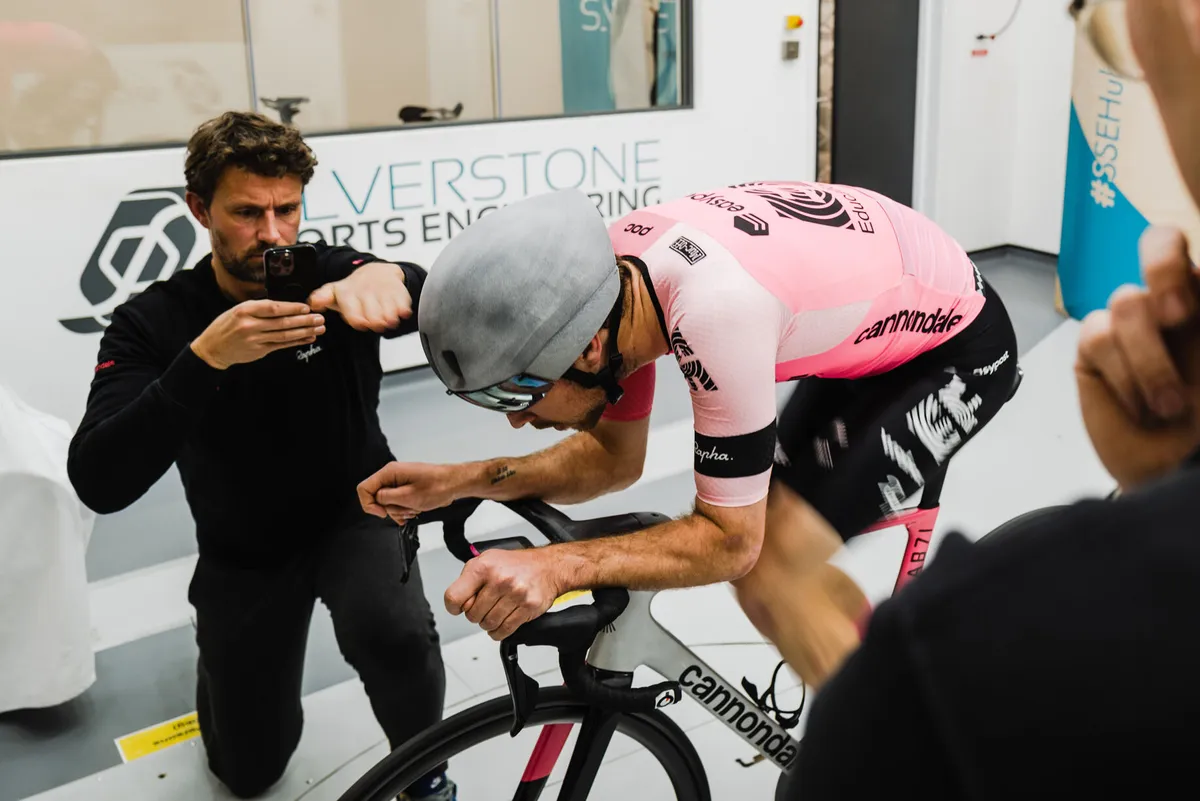
According to POC, the Procen Air was designed with the goal of offering “all the watt savings of a TT helmet” without compromising safety or a rider’s ability to hear and see.
In fact, POC goes as far as to claim the helmet can improve a rider’s vision and hearing.
This is due to the Procen Air’s integrated visor, which is said to provide a wide, unobstructed field of view, and the partial ear coverings, which are claimed to reduce turbulence around the rider’s ears.
POC says the latter “will result in most riders hearing more clearly”.
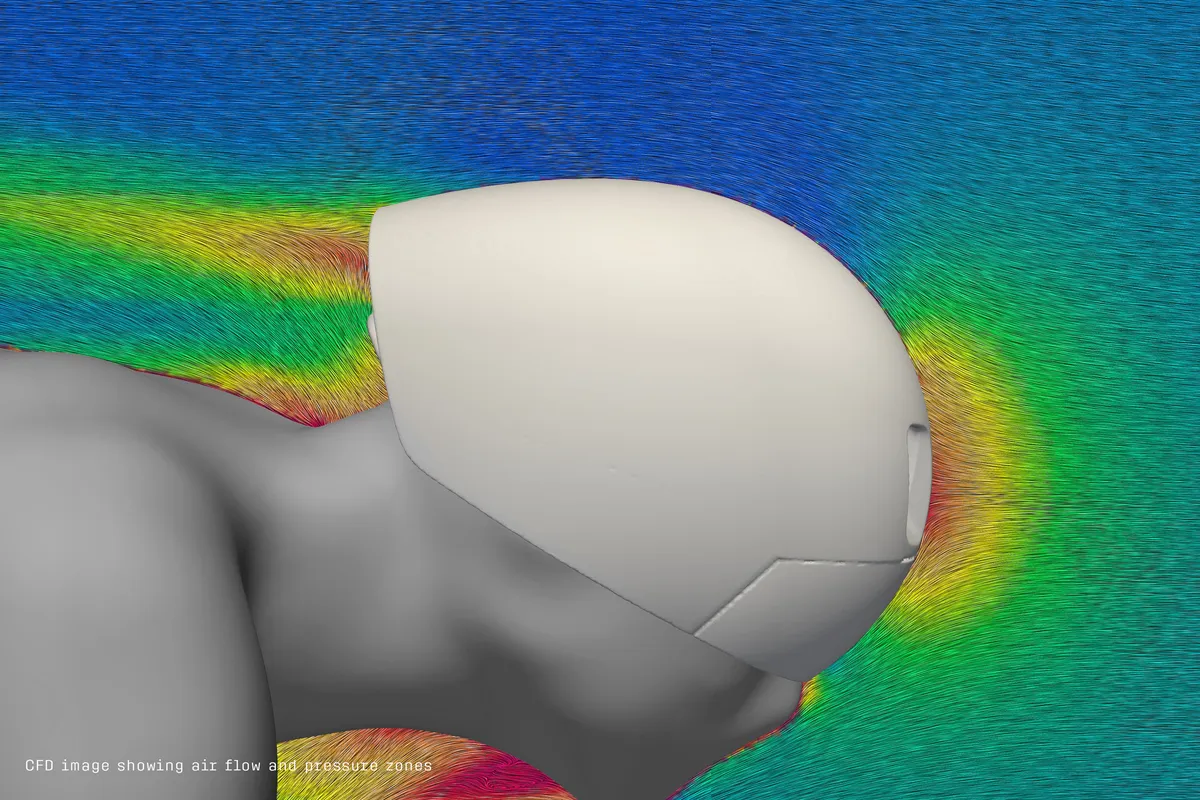
In terms of aerodynamic performance, the Procen Air functions in a similar way to the Procen TT.
As with that helmet, the Procen Air was designed using CFD (Computational Fluid Dynamics) modelling, alongside wind-tunnel and real-world aero testing.
As on the Procen TT, the three ventilation holes at the front of the Procen Air are said to “drain the high-pressure zone”, reducing the build-up of “stagnant air and additional air resistance that a rider needs to push through”.

This airflow is then channelled through the helmet, helping to cool the rider, before exiting through a series of large exhaust channels at the rear of the helmet.
According to data gathered by POC and its sponsored professional team, EF Pro Cycling (which has teams in both the men’s and women’s peloton), the Procen Air showed gains ranging from 5 to 18 watts compared to the Ventral, measured at speeds from 30 to 60kph.

POC hasn’t provided any data comparing it to popular aero road helmets from other manufacturers.
Offering a real-world example, though, Peter Schep, a performance director at EF Pro Cycling, claims the Procen Air saved Alberto Bettiol “well over 10 seconds” during his successful, 30km-long solo breakaway at Milano–Torino in early March.
POC Procen Air availability, specification and pricing
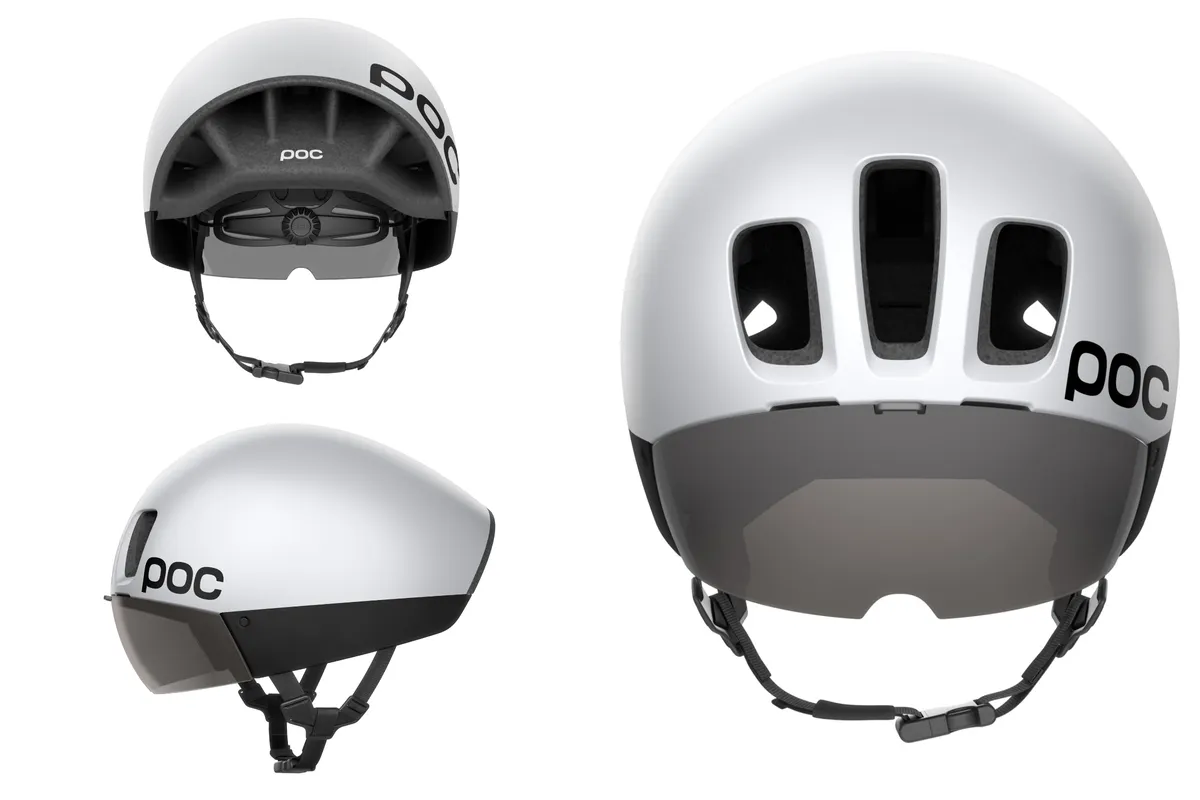
The POC Procen Air is available now in two colours – ‘Hydrogen White’ or ‘Uranium Black Matte’. Both mirrored and clear visors are included.
It costs £360 / $400 / €400 and comes in three sizes; small (50-56cm), medium (54-59cm) and large (56-61cm).
Sadly, the bright pink helmets worn by POC’s sponsored professional teams, EF Education-EasyPost and EF Education-Cannondale, aren’t available.
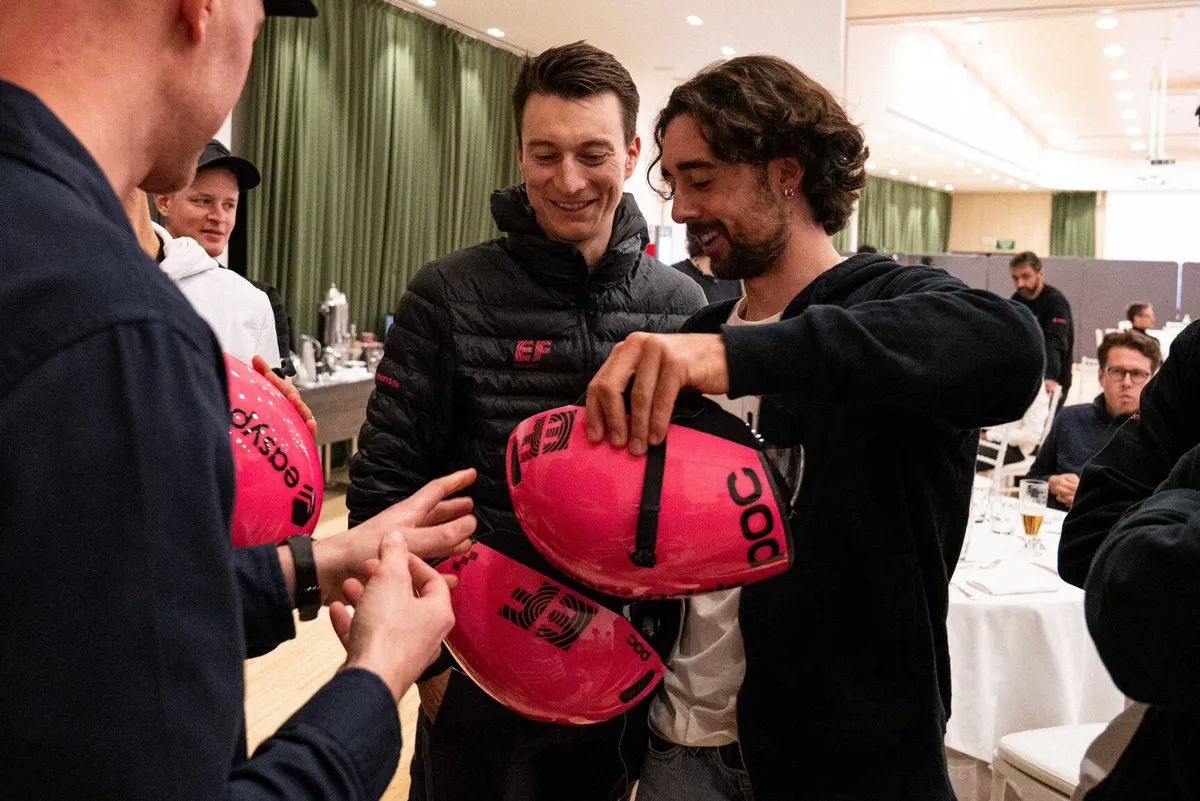
In terms of weight, POC claims a size-medium Procen Air weighs 350g. Perhaps unsurprisingly, that’s a fair bit more than most traditional aero helmets.
Specialized’s S-Works Evade 3 weighs 272g, for example, while Trek’s Ballista MIPS weighs 268g (both in a size-medium).
Analysis – was this always the logical next step?
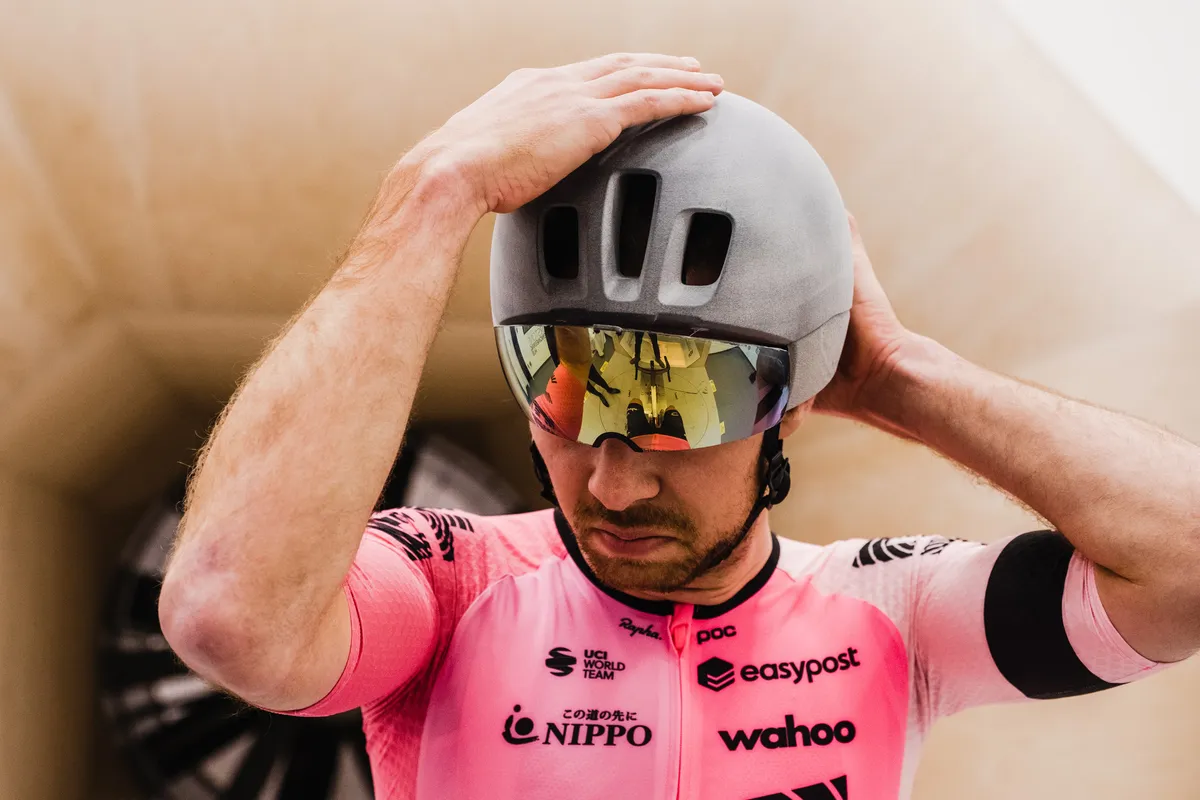
Given the onslaught of aerodynamic optimisations in professional cycling in recent years, it’s something of a wonder a helmet like the Procen Air hasn’t come sooner.
After all, despite the UCI’s technical regulations being infamously prescriptive about some things, the rules surrounding helmets are surprisingly lax.
Beyond performance concerns around ventilation, comfort and weight, there are – as far as we can tell – no rules preventing a rider from taking to the start line of a mass-start road race in a full-on TT helmet.
Indeed, we often see riders in mass-start events on the track wearing short-tail time trial helmets, such as the Kask Bambino or POC Cerebel, for example.
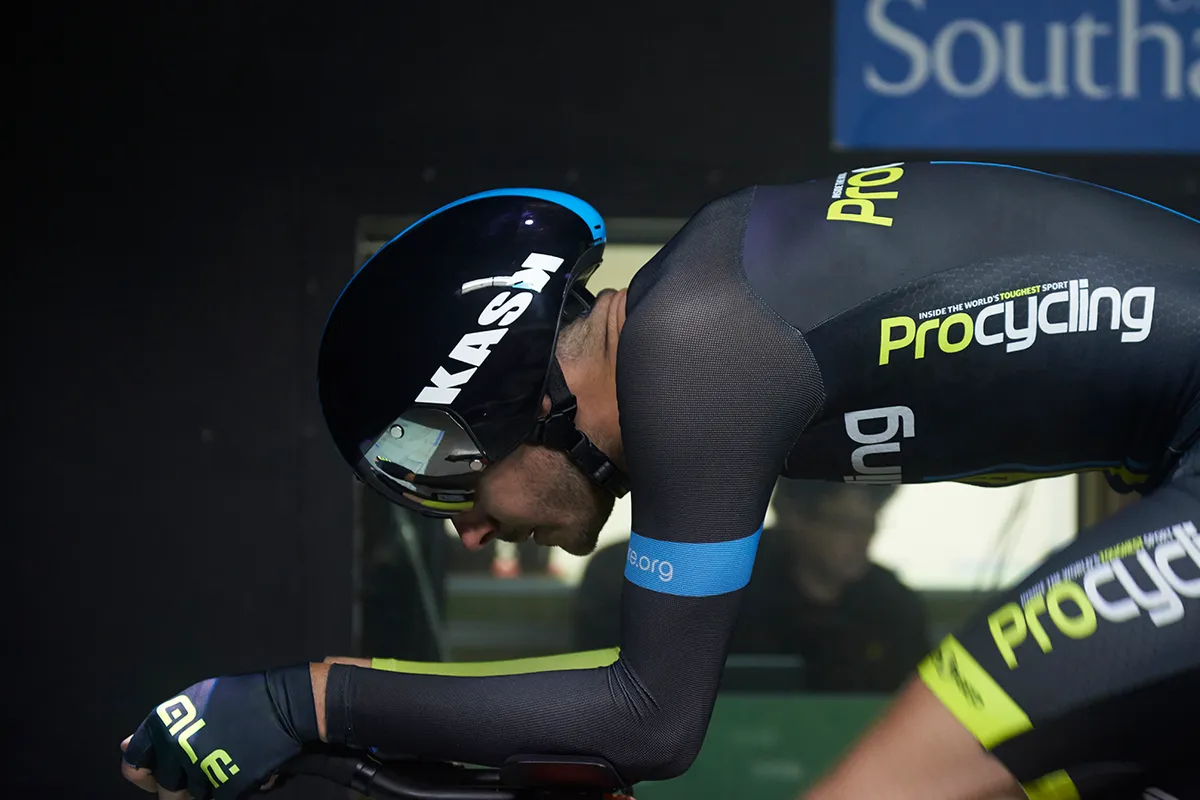
Despite the protestations of some traditionalists, other bits of time trial tech – such as skinsuits, narrow handlebars and big chainrings – have been rapidly adopted by road cyclists in recent years.
As mentioned above, even Alberto Bettiol – a rider so old-school he’s yet to fully commit to using a power meter in every race – has been wearing the Procen Air in select races this season.
In that context, a helmet that takes aerodynamic inspiration from a TT helmet makes perfect sense.
There may well be compromises to a helmet such as the Procen Air, whether in terms of ventilation, weight or comfort, but if the claimed performance gains stand up to scrutiny we wouldn’t be surprised to see other brands follow suit.
Indeed, Kask appears to be in the latter stages of development for a similar helmet, which partially covers a rider’s ears.

Perhaps, though, it’s no surprise it should be POC that makes the first leap in this area.
Its Tempor time trial helmet was more than a decade ahead of its time when it launched back in 2012, after all.
Of course, the question remains whether helmets such as this can be a commercial success outside the realms of elite sport. Thanks to its unorthodox looks, the Tempor struggled to catch on beyond a few smart riders who did their own aero testing, after all.
With everyday riders increasingly versed in the impact of aerodynamics on performance, though, the landscape certainly seems primed for a product such as this.
Could the Procen Air mark a new era for aero road helmets, then? It’s certainly possible.
